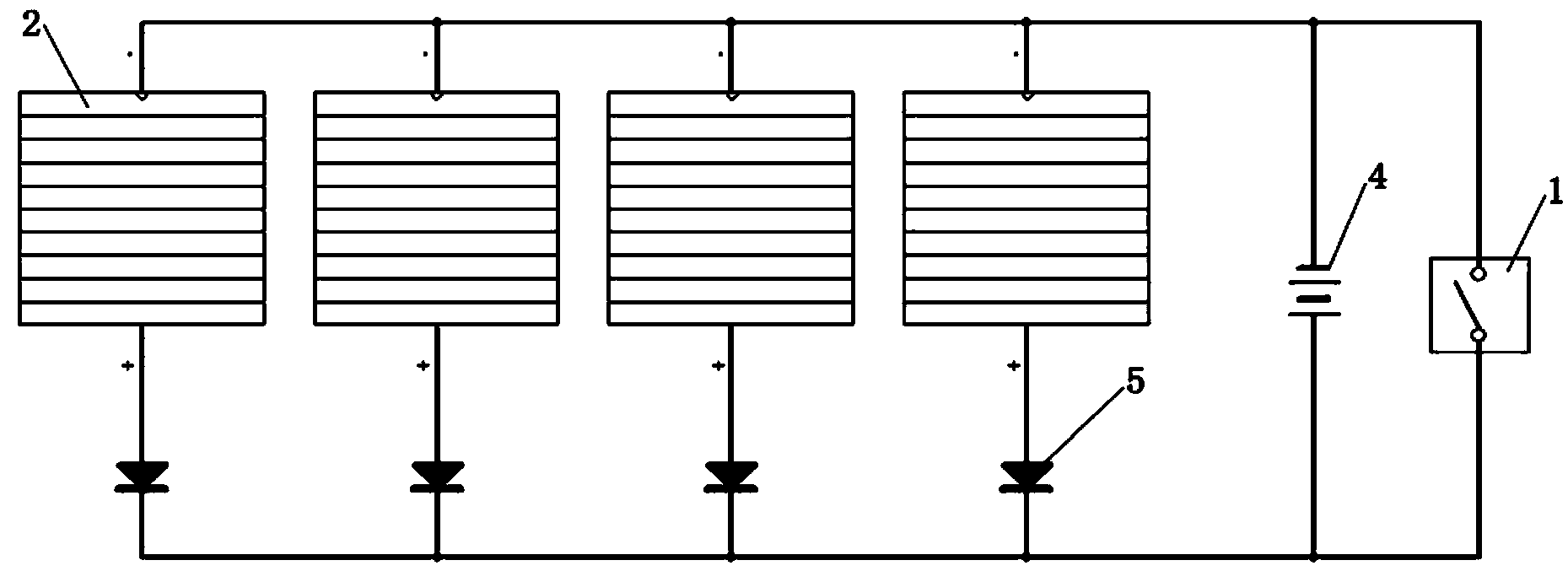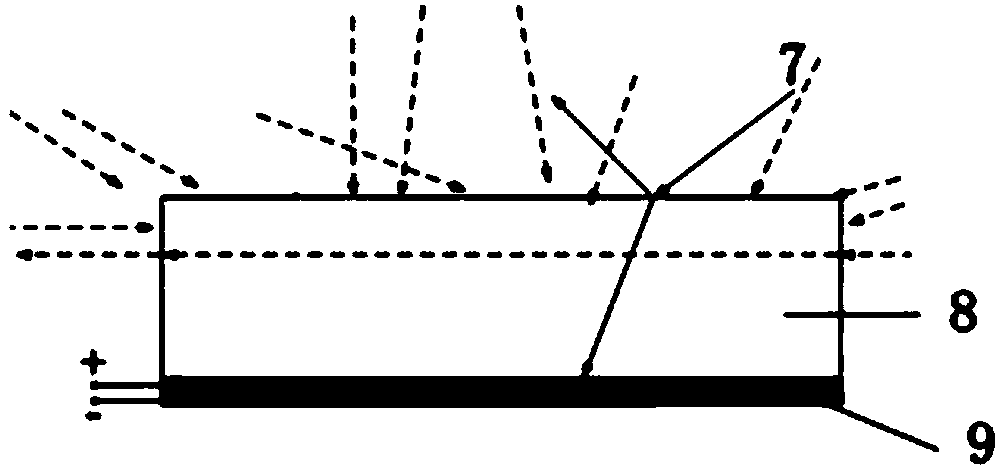Micro-lens structure hull cell and wireless switch power supply system using scattered light rays to generate electricity
A wireless switch and power supply system technology, applied in the field of solar power generation, can solve the problems of consuming non-renewable resources such as copper wires and aluminum wires, frequent replacement, cumbersome wires, etc., and achieve good application prospects, enhanced absorption, and low cost effects
- Summary
- Abstract
- Description
- Claims
- Application Information
AI Technical Summary
Problems solved by technology
Method used
Image
Examples
Embodiment 1
[0028] like figure 1 As shown, a microlens structure film battery and wireless switch power supply system for astigmatism power generation includes a hollow substrate inside. The substrate in this embodiment is a rectangular pyramid, and a control switch 1 is placed on the upper surface of the substrate. The control switch is preferably Wireless control switch, N amorphous silicon thin-film batteries 9 are respectively installed on the four sides of the base 3, said N≥1, and the base 3 is provided with circuit wiring, storage battery 4, and diode 5.
[0029] like figure 2 As shown, the amorphous silicon thin film battery is connected to the storage battery through a diode to form a charging circuit. The specific connection is: the negative poles of N parallel amorphous silicon thin film batteries are connected to the negative pole of the storage battery, and the positive pole of the storage battery is connected to the negative pole of the diode. , the anode of the diode is c...
Embodiment 2
[0038] In this example, if image 3 As shown, the amorphous silicon thin film battery is connected to the storage battery through a diode to form a charging circuit. The specific connection is: N amorphous silicon thin film batteries are respectively connected to the diode 5 and then connected in parallel to the storage battery 4 to form a charging circuit.
[0039] Other structures are the same as in Embodiment 1.
Embodiment 3
[0041] As shown in Figure 4 (a) and (b), the substrate is a glass substrate 8, and the conversion efficiency of the amorphous silicon thin-film battery has been measured many times, and the results show that the thin-film battery with the microlens array structure is processed as shown in Figure 4 ( As shown in a), using astigmatism 7 (illumination angle α=80°) under weak light (500 watts) compared with the thin-film battery without processing the microlens array structure as shown in Figure 4(b), the conversion efficiency is increased by 233 %. Four micro-lens structure thin-film batteries are used, the size parameter is 5 cm * 5 cm * 3 cm (length * width * height), the structure array spacing is 1, 1, 0.9, 0.2 mm, and the groove depth is 866, 866 , 780, 173 μm, with a vertex angle of 60°, according to figure 2 Connect the circuit connections as shown.
[0042] Carry out experimental tests. Under low light conditions indoors, discharge the battery power and use the indoor ...
PUM
| Property | Measurement | Unit |
|---|---|---|
| Thickness | aaaaa | aaaaa |
| Depth | aaaaa | aaaaa |
| Vertex angle | aaaaa | aaaaa |
Abstract
Description
Claims
Application Information
 Login to View More
Login to View More - R&D
- Intellectual Property
- Life Sciences
- Materials
- Tech Scout
- Unparalleled Data Quality
- Higher Quality Content
- 60% Fewer Hallucinations
Browse by: Latest US Patents, China's latest patents, Technical Efficacy Thesaurus, Application Domain, Technology Topic, Popular Technical Reports.
© 2025 PatSnap. All rights reserved.Legal|Privacy policy|Modern Slavery Act Transparency Statement|Sitemap|About US| Contact US: help@patsnap.com



